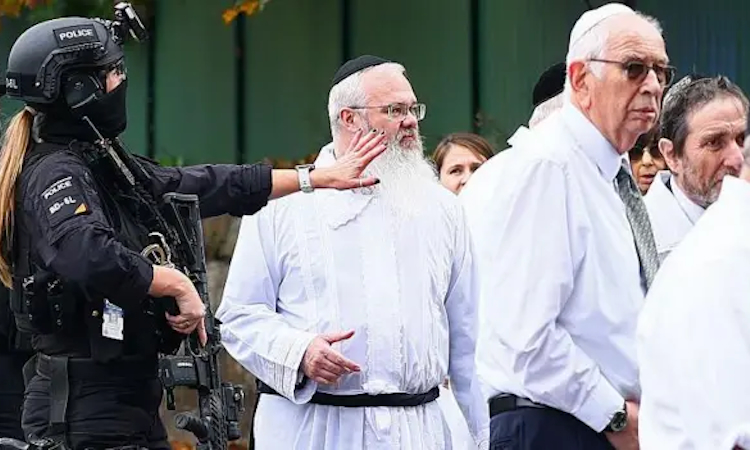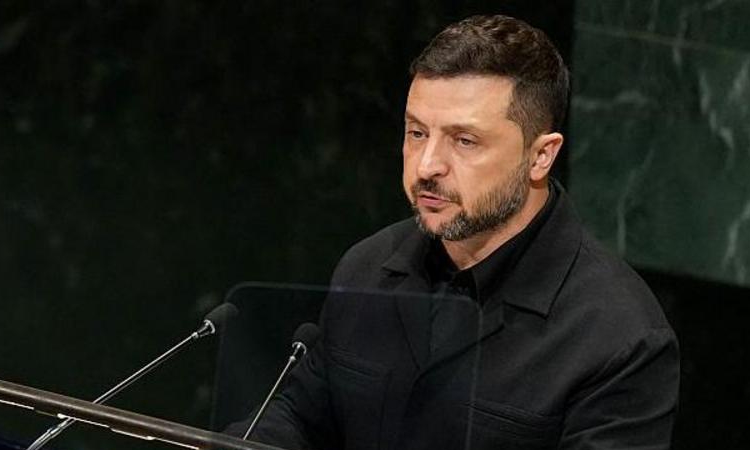The following resolution was passed unanimously by the tenth party congress of the CPGB-ML.
*****
Congress notes that the ruling class uses culture and education to maintain its hegemony, promoting ideologies that justify exploitation, competition, inequality and oppression. Through schools, media, art and entertainment, the capitalist system reinforces individualism, consumerism and passivity, obscuring the collective power of the working class.
However, culture is also a space where the working class can challenge bourgeois ideology and assert its own worldview. From the folk traditions of oppressed peoples to the revolutionary art of socialist movements, the working class has always produced culture that reflects its struggles, solidarity, and vision for a better world. The party must actively engage in this cultural struggle, supporting and amplifying the voices of working-class artists, writers and creators from socialist and anti-imperialist nations.
In defence of socialist realism
Congress notes that socialist realism is the working class’s heritage to defend. Its condemnation is tied to the condemnation of victorious socialism, and in particular of Josef Stalin, by the bourgeoisie. The ruling class seeks either to transform it into a commoditised trophy or to reduce it to empty aestheticism. But socialist realism holds historical significance for the emancipation of women, egalitarianism, the confidence and pride of the peoples in socialist construction, and the preservation of national cultures.
Moreover, socialist realism has been a method of introducing new artistic forms and conceptions in the oppressed nations and it has been enriched by the arts of those nations. It has been a common ground and basis of dialogue and fraternity for the peoples of the USSR and the people’s republics, and for the anticolonial and anti-imperialist movement.
Nowadays, through state-sponsored exchange programmes, countries still share the language of socialist realism, influence one other and share classical and traditional art vocabularies. There are still continuities in socialist and anti-imperialist states that we must study, both for inspiration and as reference points. We must evaluate the transformations that socialist realism takes in these countries, which reveal how the national and international spheres are interconnected in influencing it, as well as the contradictions in the economy and its impact upon culture.
Furthermore, it is essential to emphasise the importance of culture for national independence – as seen, for instance, in the People’s Republic of China and the Republic of Cuba – and to strengthen our party’s cultural connections with those nations.
Congress understands that, as in Lenin’s time, cinema remains the most influential artform for socialist and anti-imperialist countries, serving as an alternative to the entertainment industry dominated by imperialism. Cultural institutions in these nations (such as the DPRK’s Mansudae art school) contribute internationally through cultural exports, reinforcing their national economies through commissioned monuments. As a result, all such efforts are sanctioned by imperialism. The British movement and people have been deprived of the achievements of socialist realism.
Congress recognises that just as socialism has not been totally defeated, despite the claim of the “end of history”, but has merely suffered a temporary setback, in the same way socialist realism is not dead but endures as the aesthetic expression of the consciousness that socialism develops about society itself. Despite changes in socialist and anti-imperialist states, socialist realism remains alive, albeit under different names. To the degree that a country has developed socialist relationships of production, socialist realism is accepted and adopted there.
Internationalism is facilitated by the use of a common artistic idiom such as socialist realism, which is shared and commonly understood among socialist countries, providing a shared style and a common understanding of the relationship between content and form.
Congress asserts that socialist realism is not a ‘Russian’ invention; it is the culmination of socialist art. It is not a ‘national’ art that stands in superiority over others; it is an art for all humanity.
Congress notes that the decline of US imperialism, the call for a multipolar world and the democratisation of international relations, and the demand for respect for national cultures in the countries that resist imperialism, all require communists to work towards making these cultures coherent and cohesive on the foundational principles of socialism and internationalism, despite their cultural differences.
Congress asserts that, in its formation, socialist realism has absorbed the trajectory of so-called ‘western art’, positioning itself as a truly revolutionary and modern movement. It is the most comprehensive artistic conception developed by the communist movement. Investigating the ways that national cultures integrate into socialist realism and the forms it takes today in socialist and anti-imperialist countries is of paramount importance for cultural workers.
Congress emphasises that to fully understand socialist realism, we must review Britain’s realist and popular traditions, so that socialist realism and its development can be interpreted dialectically, in line with the development of each society. Those who engage with it purely in aesthetic terms – either accepting or rejecting it based on personal preferences – perpetuate the dominance of the ‘art for art’s sake’ doctrine in the present capitalist system.
This aestheticisation ignores socialist realism’s social agency, particularly its participatory nature, in which the working class is the subject of history. It fails to grasp the dynamism and inner world of the working class, and its consciousness. Socialist realism is a pedagogy of social relations that aligns with the achievement of socialism.
Counter-revolutionary attitudes to socialist culture
Congress notes that critics often dismiss socialist realism as mere ‘propaganda’, branding the very notion of propaganda with hypocritical liberal scepticism. Others decry it as ‘moralistic’, even as they turn a blind eye to the complete moral degradation of imperialism. Postmodernism, the dominant narrative of imperialism today, even attempts ‘Marxist’ interpretations of culture that simultaneously reject socialist realism, which has developed alongside the history of the socialist movement and consciously serves Marxism and scientific socialism. For this reason, the bourgeoisie condemns it as ‘conservative’ and a repressive throwback as compared with whatever it deems ‘avant-garde’ at a given moment.
Congress recognises that the undermining of socialist realism began with Khrushchevite revisionism and the communist parties that followed this trajectory, especially in the west. Over the years, it has been ‘re-evaluated’ and exploited, initially suppressed by postwar capitalism, then stigmatised as ‘totalitarian’ art during the cultural cold war. It was equated to fascist imagery, ridiculed and degraded by neoliberalism. In late-stage capitalism, Russian culture is now being crudely excluded and cancelled as a result of Nato’s war in Ukraine, with the west striking at the very foundations of its adversary – and, ultimately, of humanity itself.
Congress deplores the destruction of Soviet monuments and everything Russian, and understands that the decommunisation process is a coordinated Nato operation. In other countries, the deliberate degradation and vandalism, and the removal from public space of Soviet and socialist monuments echoes the European parliament’s resolution on “totalitarianism”. This is a war on the memory of these peoples in order to break historical relations and cultural ties with Russia, to strengthen fascist forces and historical revisionism in public life, education and universities, and thus consolidate the expansion of Nato.
The imperialists aim to revise the history of WW2 and to rehabilitate Wehrmacht collaborators. These actions are presented to eastern European peoples as a prerequisite for EU membership; that funding will flow if they get rid of their socialist past. Controlled opposition, NGOs and colour revolutions complete the picture. Yet the legacy of socialist culture persists through the collective memory of the heroic peoples of Donbass and in the activities of persecuted communist groups in many former Soviet republics.
Congress asserts that imperialist institutions meticulously curate art exhibitions and universities promote anticommunist propaganda in so-called ‘Soviet studies’ programmes, while think tanks depoliticise art and anything that can offer perspective to the people and mobilise them. Even the student press reinforces these narratives, bombarding young minds from an early age.
The destruction of national cultures in nations resisting imperialism – such as Iraq, Libya, Yemen, Syria, Palestine, and Iran, which is also targeted for its cultural status in the middle east – demonstrates how cultural heritage is destroyed, plundered and appropriated. The intellectuals of the movement remain silent, complicit in these cultural genocides, reducing them to ‘humanitarian issues’ while liberal outlets like the Guardian sanitise their erasure.
Congress believes that it is crucial to expose the role of cultural institutions and their intellectual enablers since the time of Tony Blair, particularly in academia. The ‘inclusion’ of comprador individuals from these oppressed nations in academic positions or as award recipients often serves as a tokenistic alibi to cover the crimes of imperialism, advancing ideas that are ultimately counter-revolutionary and anti-worker.
The duty to our youth
Congress recognises that for the Red Youth of our party, it is essential to deeply appreciate the culture that the anti-imperialist and anticolonial movements have developed under the harshest conditions. The poetry and music that celebrate these struggles are not merely artistic expressions; they are vital conditions for the survival of struggling peoples. Artforms such as political cartoons remain an important weapon for the peoples who resist, and also for communists. Our youth should draw inspiration and courage from these traditions.
As a party, we must highlight the role of the talented comrades and fellow travellers that we have – poets, writers, musicians, visual artists, architects, directors, designers, photographers and dancers – and ensure that our party takes its rightful place in the movement for revolutionary culture. We need a presence in working-class communities and the organisation of cultural events that will bring in new comrades, reflecting the true diversity of the British working class at a time when our rights are under attack, attempts are made to crush the Palestinian movement, and few British artists have dared to take a stand.
Congress notes that socialist culture faces relentless attacks, distortions and misappropriations. Reactionary forces attempt to strip it of its revolutionary content and integrate it into bourgeois culture. In Britain, the Revolutionary Communist Party (RCP) and other Trotskyist groups systematically engage in this process, exploiting ignorance and the lies perpetuated by the ruling class. The bourgeoisie seeks to monopolise culture, leaving no reference point for communists. Meanwhile, Labour obscures its anti-worker policies with cultural posturing, leading to the indifference or outright hostility of the working class toward intellectuals and cultural labour.
Congress asserts that the Communist Party of Britain (CPB) revisionists have hijacked what was positive about the cultural heritage of the old CPGB, presenting it as a museum piece, harmless and devoid of revolutionary content. It is also necessary to reclaim the traditions of the Artists’ International Association (AIA) from the CPB. The Artists International Association was linked to CPGB and had as its aim “The unity of artists for peace, democracy and cultural development”. It held a series of large group exhibitions on political and social themes, beginning in 1935 with the exhibition Artists Against Fascism and War, and it supported the republican cause in Spain.
We should also examine the postwar attitudes of many British communist intellectuals after the publication of the British Road to Socialism party programme or the 1956 crisis – Francis Klingender, George D Thompson and others – so that we can draw the correct conclusions.
Usurpers
People who have been exposed to the ideological and political crisis that broke up the CPGB are now the ‘intellectuals’ of the CPB who romanticise ‘their’ past. Claiming ownership through family lineage and professional academic credentials, they organise seminars and publish articles in the Morning Star while integrating themselves into the Labour ‘left’ and seeking votes for the imperialist Labour party. True opportunists, they use identity politics especially to appeal to the youth, sowing further confusion.
As communists, we have the main say in the evaluation of socialist culture, which is our inheritance as a whole, despite the fact that the bourgeoisie and its agents periodise categorise and interpret it arbitrarily in academia and according to their class interests, seeking to influence the perception of progressive people. Thus, well-meaning people end up accepting bourgeois propaganda regarding the reception of socialist realism and socialist culture in general. Congress emphasises that it is our duty to cultivate the aesthetic education of our comrades and inspire a people-centred culture.
Congress recognises that our party has always understood that culture is a crucial arena of class struggle. Over the years, our publications have exposed both the crude anticommunist propaganda of the ruling class and the more refined manipulations of social democracy, which seek to mislead progressive individuals in this country. It is our duty to educate the working class in a culture that is rightfully theirs – a culture that fosters the liberation of the working class and promotes fraternity with the working peoples of the world.
Congress recognises that, as Lenin emphasised, education must not be limited to the absorption of abstract knowledge but must be deeply connected to the practical tasks of the class struggle. The party therefore resolves to:
- Promote critical thinking: Education must teach the youth to critically analyse society, question bourgeois ideology, and understand the historical and material roots of exploitation and oppression.
- Integrate education with labour: Education must be combined with productive labour, ensuring that young people develop both intellectual and practical skills. This approach will break down the division between mental and manual labour, a hallmark of class society.
- Foster communist morality: Education must instil a sense of collective responsibility, solidarity and dedication to the revolutionary cause. The youth must be educated to serve the people and contribute to the struggle for socialism.
Congress asserts that the party has a responsibility to foster a culture of resistance and liberation and to ensure that education serves the interests of the working class. This means:
- Critiquing bourgeois culture and education: The party will expose the reactionary and exploitative nature of mainstream cultural production and education, challenging the commodification of art and the glorification of individualism, consumerism and bourgeois nationalism.
- Promoting internationalism: The party will champion cultural and educational initiatives that highlight the proletarian internationalist nature of the class struggle, fostering solidarity with workers and oppressed peoples around the world.
- Preserving and invigorating traditions: The party will engage with the cultural and educational heritage of the working class, preserving its progressive elements while challenging reactionary (such as unhealthy attachment to drinking culture that belittles the working class) and divisive aspects (such as football hooliganism or identity politics that seek to patronise and manipulate young people in particular).
Congress resolves that to advance the cultural and educational struggle, the party will:
- Establish a cultural committee to coordinate efforts in the fields of art, literature, media and education.
- Organise cultural and educational events, film screenings and seminars that showcase working-class creativity and deepen our understanding of socialist realism.
- Develop educational materials and curricula based on Marxist theory, equipping members with the tools to analyse and critique cultural production and bourgeois education.
- Build alliances with socialist and anti-imperialist cultural and educational institutions from China, the DPRK, Cuba, Venezuela, Iran, Russia and Belarus in particular.
- Utilise digital platforms to disseminate revolutionary culture and counter bourgeois propaganda. (by publishing examples from the art of the USSR and China, for example).
Congress asserts that the struggle for socialism is not only a political and economic struggle but also a cultural and educational one; reclaiming culture and education from the hands of the ruling class and transforming them into tools of liberation. The CPGB-ML commits itself to this vital task, recognising that a socialist future depends not only on the overthrow of capitalism but also on the creation of a new culture and educational system that reflects the values of solidarity, equality and human dignity.














